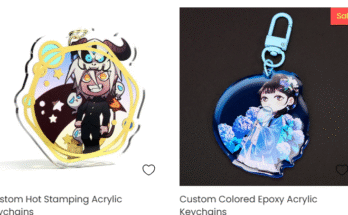Tobacco products, including cigarettes, smokeless tobacco, cigars, hookah, and dissolvable, have flavors added to them to increase their appeal and palatability. They come in various candy, fruit, dessert and cocktail flavors.
Tobacco product manufacturers aggressively market flavored products. They pay to place them on store shelves and counters, use colorful imagery on packaging, and introduce new and limited-edition flavors.
They Attract Young People
Tobacco products like cigars, snus (teabag-like pouches of tobacco), cigarettes and e-cigarettes are now marketed in various flavors. Many of these flavors taste and smell similar to candy, fruit or alcohol.
Flavored cigarette smoke is less harsh than traditional cigarettes and may be easier on the throat for new users. For example, menthol-flavored cigarettes are less complicated and easier to use than non-menthol-flavored cigarettes.
These flavored tobacco products are marketed to kids because they are appealing and easy to use. Tobacco companies advertise their flavored products in magazines, on TV and online.
The most popular tobacco product among youth is the e-cigarette, often flavored to mimic fruit or candy. It can also be flavored with various substances, including alcohol and herbs.
Despite their ad campaigns, e-cigarettes are just as harmful to children as regular cigarettes and can lead to long-term addiction.
For instance, a study in Wisconsin found that 96% of middle schoolers would not try an e-cigarette if it were not flavored.
Other flavored tobacco products include flavored cigars, smokeless tobacco and hookah. They are available in various flavors, from sour apple to chocolate to strawberry margarita.
They Are Not Safe
The CDC has found that flavored cigarettes are more addictive than non-flavored cigarettes. They are also harder to quit.
The tobacco industry uses a variety of flavors to make tobacco products more appealing, especially to youth. These include menthol, chocolate, grape, cotton candy and fruit punch.
Studies show that flavored cigarettes are more likely to attract youth and serve as a “starter” product for regular use, making them more likely to become addicted. Several localities have banned flavored tobacco products, including menthol.
Santa Clara County, CA, has a policy restricting the sale of all flavored tobacco products to retailers with a physical location accessible only to adults 21 and older. This restriction is effective in reducing cigarette smoking among youth and young adults.
New York City’s law prevents the sale of flavored cigarettes and vaping products (e-cigarettes and liquid nicotine). These products heat tobacco without burning it, exposing users to tar and other toxic chemicals.
In addition to cigarettes, flavored products include cigars, chewing tobacco, dry snuff, dip and electronic nicotine delivery systems (e-cigarettes or vaping products). These products are often marketed as safer alternatives to cigarettes. However, they are just as harmful.
They Are Not Effective
Tobacco products like smokeless tobacco, little cigars and cigarillos, large cigars, e-cigarettes, hookah, and dissolvable have flavors added to increase their appeal and palatability. These include menthol, vanilla, orange, apple, chocolate, cherry, strawberry, candy or confectionery flavors, alcoholic beverages, herbs, and spices.
Since the 2009 Family Smoking and Tobacco Prevention Act, flavored tobacco products have continued to grow in popularity. They are often sold individually and cheaply and come in various fruit, candy, dessert and cocktail flavors.
The emergence of these products has led to concerns that they are more attractive to youth and young adults than cigarette smoking or e-cigarette use. They can be used as a gateway to regular tobacco use by young people and serve as a first step towards traditional smoking by adults.
Various approaches states and localities take to restrict the sale of flavored products, including comprehensive sales prohibitions or partial restrictions, such as eliminating the sale of all flavored e-cigarettes or limiting the sale of all flavored combustible tobacco products. However, the evidence that these policies effectively reduce flavored tobacco use is limited.
To understand the impact of flavored tobacco product policy solutions, more research is needed to evaluate the effect of comprehensive and partial flavoring sales restrictions on current flavored combustible tobacco use among US youth and adults. In particular, more robust study designs and methods and longitudinal follow-up are necessary to continue assessing the health impact of various flavored tobacco endgame policies at the state and local levels.
They Are Harmful
The tobacco industry has a long history of targeting young people with flavored products. Flavors can improve the taste and mask the harshness of tobacco, making it easier for kids to try them and then become addicted to them.
Researchers have found that flavored products are more likely to be used by youth than non-flavored products, especially cigarettes and e-cigarettes. This is because flavors lower tobacco use’s perceived harm and social acceptability, increasing experimentation and leading to initiation and continued use.
Tobacco products, including combustible cigarettes and other nicotine-containing smokeless tobacco, are highly addictive and cause health problems for many Americans. They contain harmful chemicals, and secondhand smoke can cause further health problems.
There is no safe form of tobacco; smoking can lead to cancer and heart disease. It is important to stay tobacco-free.
Research shows that flavored menthol, mint and other products are more likely to be used by young people than unflavored versions. These flavored products are easier to use and seem more appealing than plain old-fashioned cigarettes or e-cigarettes.
A new study from a few California cities finds that restrictions on flavored tobacco sales reduce youth use. In Oakland and San Francisco, where a ban on the sale of flavored tobacco products was implemented in 2018, fewer kids used flavored tobacco before and after. This is a critical step in the fight to prevent children from starting to use tobacco and create the first tobacco-free generation.





